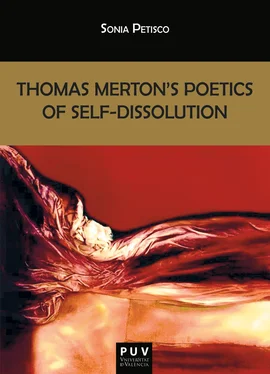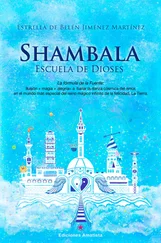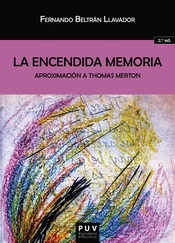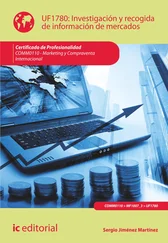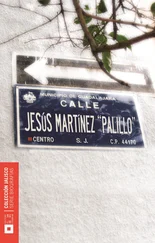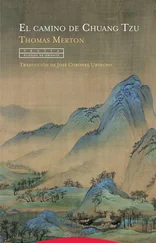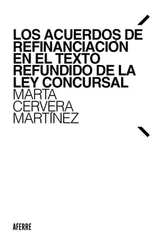However, by no means was Merton’s trip to the Trappist Jerusalem an evasion, but rather a way of exploring his own inner truth to find “the fullness of the Christ– life in the soul.” 11Thus, he wrote in a later work, “I shall be lost in Him: that is, I shall find myself.” 12As we will see, in the first stanza of “A Letter to My Friends,” Merton begins by establishing a comparison between the monastery, “Nazareth,” Jesus’s birthplace, and the “holy desert” whose inhabitants “more than we fear […] love […] these thorns, the phoenix’s sweet and spikey tree,” which might stand in the poem as a symbol of the Cross. These coenobites have gone deeper into this metaphorical wilderness in order to embrace Christ’s passion but also Christ’s immense love; they are described as “separate strangers,” “hid in their disguises,” who “have come to meet, by night, (that is to say during the divine office of Matins) , the quiet Christ.” Their dwelling is the very mystical body, an indestructible temple which, despite any demolition, can be rebuilt in three days. “All your ruins are rebuilt as fast as you destroy yourselves,” stresses the poet, and he also introduces the metaphor of “our desert’s wooden door,” recalling the Biblical warning: “for the gate is narrow and the road is hard that leads to life, and there are few who find it” (Matthew 7:14).
The poem reads as follows:
A LETTER TO MY FRIENDS
On entering the Monastery of Our Lady of Gethsemani, 1941
This holy House of God,
Nazareth, where Christ lived as a boy,
These sheds and cloisters,
The very stones and beams are all befriended
By cleaner sun, by rarer birds, by lovelier flowers.
Lost in the tigers’ and the lions’ wilderness,
More than we fear, we love these holy stones,
These thorns, the phoenix’s sweet and spikey tree.
More than we fear, we love the holy desert,
Where separate strangers, hid in their disguises,
Have come to meet, by night, the quiet Christ.
We who have some time wandered in those crowded ruins,
(Farewell, you woebegone, sad towns)
We who have wandered like (the ones I hear) the moaning trains,
(Begone, sad towns!)
We’ll live it over for you here.
Here all your ruins are rebuilt as fast as you destroy yourselves,
In your unlucky wisdom,
Here in the House of God
And on the holy hill,
Where fields are the friends of plenteous heaven,
While starlight feeds, as bright as manna,
All our rough earth with wakeful grace.
And look, the ruins have become Jerusalems,
And the sick cities re-arise, like shining Sions!
Jerusalems, these walls and rooves,
These bowers and fragrant sheds,
Our desert’s wooden door,
The arches, and the windows, and the tower! 13
Christ became the center of Merton’s life. During the first years at the abbey he devoted most of his literary inspiration to the writing of poems which express his longing for an intimate union, persevering in his spiritual path and in the hard effort to reach his own detachment. The next poem is one of the most touching examples of this.
Within a symbolic natural context of vineyards and wheat fields, which clearly allude to the bread and wine of Holy Communion, this poem celebrates a love feast, the wedding of Christ and man which takes places in the mystery (the “bright secret,” says the poem) of the Eucharist or sacramentum unitatis , 14offering us the gift of love and the joy of being reborn in Christ, as He Himself announced: “Those who eat my flesh and drink my blood abide in me, and I in them” (John 6:56). This ardent chant starts with an exclamation: “O sweet escape! O smiling flight!” An escape from where? we may wonder. The poet seems to clarify that it is an escape from the jails of flesh, the prison of the individual body and of the individual soul (since there is not an individual body if there is not a soul which owns it). We do not know what “body” is; we really do not know for it plunges into the deepest depths and is beyond all our superior powers: intelligence, understanding and will. In addition, terms with negative connotations such as “death,” “dark,” “night” are juxtaposed through these verses with other words hinting at the divine Majesty.
Paradox is, therefore, presented as an essentially intrinsic element of the spiritual journey: the lyrical voice is living in darkness – “unlock our dark,” he implores — but it is a darkness which is already light, the light radiating in and from Christ. This is the darkness which precedes dawn, a darkness present in the Christian mystical tradition since Dionysius the Areopagite and so beautifully sung of by Saint John of the Cross, whom Merton read widely and to whom he owes some of his most penetrating images such as that of the “flight.” This, in its turn, is the flight towards the freedom attained through the joy which pervades you when you no longer desire anything, when you no longer withhold anything, when you let go of yourself, in sum, when you cease existing, as it were. We all have some experience, or at least some hints, of how this sometimes happens. The following poem offers a foretaste of it.
THE COMMUNION
O sweet escape! O smiling flight!
O what bright secret breaks our jails of flesh?
For we are fled, among the shining vineyards,
And ride in praises in the hills of wheat,
To find our hero, in His tents of light!
O sweet escape! O smiling flight!
O sweet escape! O smiling flight!
The vineyards break our fetters with their laughter!
Our souls walk home as quiet as skies.
The snares that death, our subtle hunter, set,
Are all undone by beams of light!
O sweet escape! O smiling flight!
O sweet escape! O smiling flight!
Unlock our dark! And let us out of night!
And set us free to go to prison in this vineyard,
(Where, in the vines, the sweet and secret sun
Works our eternal rescue into wine)
O sweet escape! O smiling flight!
We’ll rob Your vines, and raid Your hills of wheat,
Until you lock us, Jesus in Your jails of light!
O sweet escape! O smiling flight! 15
At first, Merton thought that contemplative life at Gethsemani would help him in this way of negation. He wrote that the monastery is “a place in which I disappear from the world as an object of interest in order to be everywhere in it by hiddenness and compassion. To exist everywhere I have to be No-one.” 16During the first years in the cloister, he even considered that his writing vocation could be a hindrance to contemplation. He expressed this fear both in prose and poetry. In one of his autobiographical passages we read: “There was this shadow, this double, this writer who had followed me into the cloister […] He is supposed to be dead. But he stands and meets me in the doorway of all my prayers, and follows me into church. He kneels with me behind the pillar, the Judas, and talks to me all the time in my ear […] And the worst of it is, he has my superiors on his side. They won’t kick him out. I can’t get rid of him […] Nobody seems to understand that one of us has got to die.” 17In spite of all these vicissitudes, Merton composed several books under the obedience of his Abbot such as Figures for an Apocalypse , from which I have taken the next poem. The poet could never stop writing. On the contrary, his vocation as a writer accompanied him like “a Sinbad burden” all his life – let us remember that Sinbad always had a “little man” on his shoulder. Eventually Merton learned how to reconcile both vocations, as monk and poet, and ended up seeing writing as a medium of creation, contemplation and criticism. 18
Читать дальше
